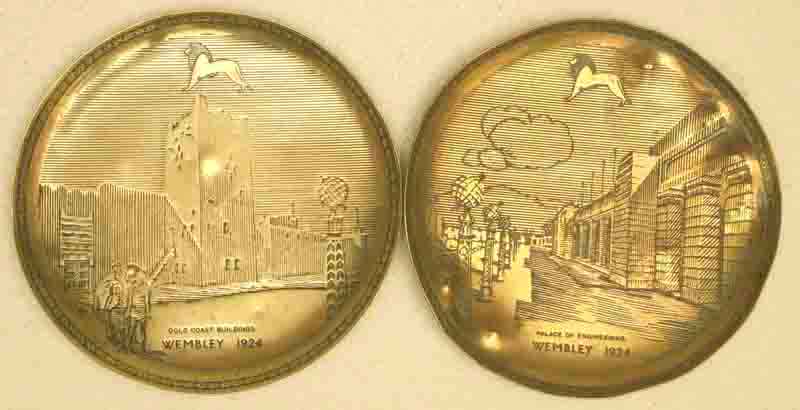Kinco Brassware
(c) Antique Metalware Society
Small extracts can be used with acknowledgements to 'Oldcopper.org' website.
Helpful comments are very welcome.
The menu above shows pages that cover many of the items produced by Kinco.
Also there is a copy of many pages of the 1932 catalogue which was produced at a critical time. There were radical changes brought on by the world economic conditions.
British Metal, (Kingston) Ltd
'Kinco' is a trade name that can be found under many items of good quality, useful, decorative brassware. Typically there is a decorative pattern that has been relief-etched and filled with colours. The patterns may have a Japanese, Chinese, Persian or Indian type of theme tailored to suit the British taste, like so much else possibly inspired by the work of Christopher Dresser after his return from Japan.
'All the 'Kinco' designs are actual reproductions, faithful in the tiniest detail to the world famous originals of known masters. They are made in heavy brass.' - (The 'Kinco' News, September 1926.)
The products are not highly valued at present and may be found at many fairs and dealers. At a distance it is possible to recognise the maker's products but close examination shows the multitude of designs that were used. Items were made in good quantities from sheet brass that was much harder than usual so their survival rate is good. Most items in the catalogues were made with a selection of different decorative etched patterns, see the bottom of this page and the accompanying pages of views of products.
Some of the items are marked 'Made in England'. The Trade Mark 'Kinco' was registered to British Metal, (Kingston) Ltd, 47, Eden Street, Kincoland, Kingston-on-Thames, Surrey which was there from c1923 to c1930. In 1930, British Metal Engraving Co. was set up nearby at St Margaret's Works in Twickenham, Middlesex and lasted there until c1963. In catalogues they mentioned being established in 1887 but what was produced before the post WW1 'Kinco' wares is not known. They had continued production of Kinco wares until the outbreak of war in 1939 when they switched to making labels, nameplates and other printed or engraved items for aircraft, etc. The firm moved to new premises in Witney, Oxfordshire and was bought out in 1984. (Thanks to Bob Polfeman).
Kinco also made miniature metal looms. Further information would be very welcome.
"The name 'Kinco' is abbreviated from Kingston-on-Thames, near London which was originally a King's town. Seven, if not more, Saxon rulers were crowned upon the famous old stone which stands in the centre of the town." (From The 'Kinco' News, September 1926.)
(The name 'Kinco' as a Trade Mark was also registered by Harris Lifting Co., Cradley Heath, West Midlands in 1954 and is also in use for clothing and other items.)
For most designs with an Asiatic theme the mark is:

Where the design theme is European, the mark is simpler:

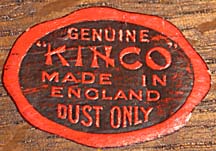 This paper label is under a trump indicating holder for a pack of cards.
This paper label is under a trump indicating holder for a pack of cards.
The 'Dust only' suggestion applied to most Kinco products since they were well lacquered over the infill of paint in the etched brass.
Polishing tends to destroy the protective lacquer and removes the paint colour.
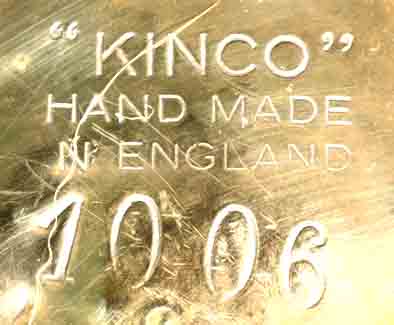
Here is a rare version of the mark found under a rare brass jardinière.
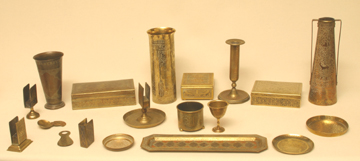
A small selection of 'Kinco' products. Many more can be found from the menu above.
.jpg)
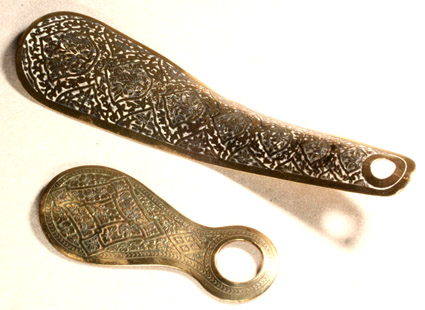
Here are a few of their patterns. None were named in their catalogues but if anyone can identify known patterns I would be very glad to know the names. (vin (at) oldcopper.org)
Above are examples of patterns on a caddy spoon and two shoehorns.
Below are varieties of decoration on matchbox holders.
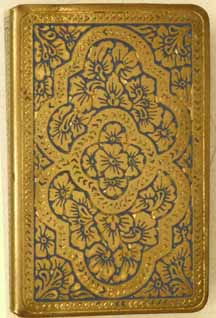
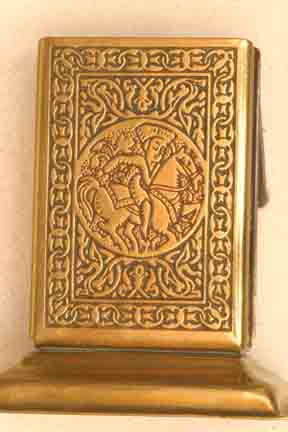
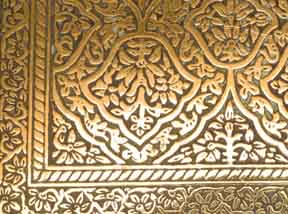
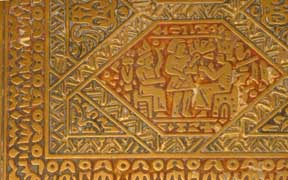
Part of the patterns on boxes for trinkets or cigarettes
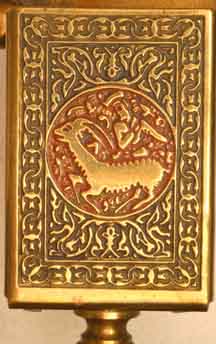
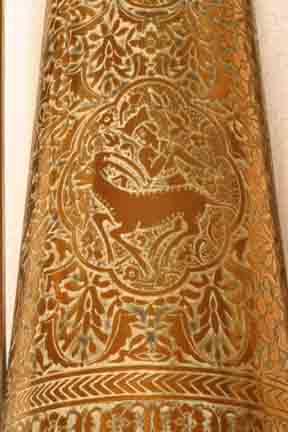
A goat features on a match holder and a tapered vase.
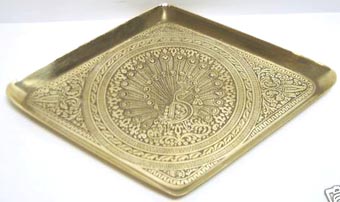
A complex floral pattern found on a small tray with a peacock centre. The original colour has been etched out. It is said that some sellers removed colours before putting the items on display in order to appeal to a different market.
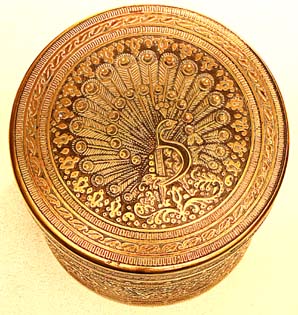
The peacock design on the lid of this pot is similar to that on many items engraved by makers in India during the early 1900s.
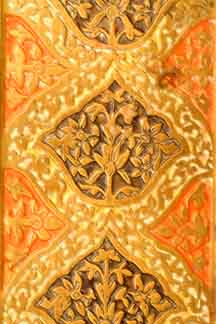
Glorious original colours in the pattern seen in a splendid pen tray shown above.
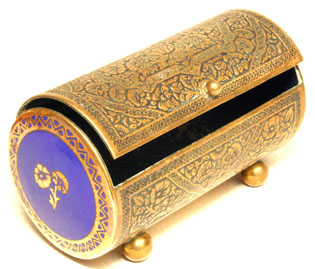
An elegant cigarette box with the etched brass infilled at the ends with blue enamel.
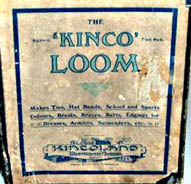
"British Metal, (Kingston) Ltd, Kincoland, Kingston- on-Thames, England" also made miniature metal looms. It was the finding of this item that gave the clue to the identity of the firm using the 'Kinco' trade mark!
Two plates made only for the British Empire Exhibition at Wembley in 1924. They show the Gold Coast Buildings on the left while the right shows the Palace of Engineering.
